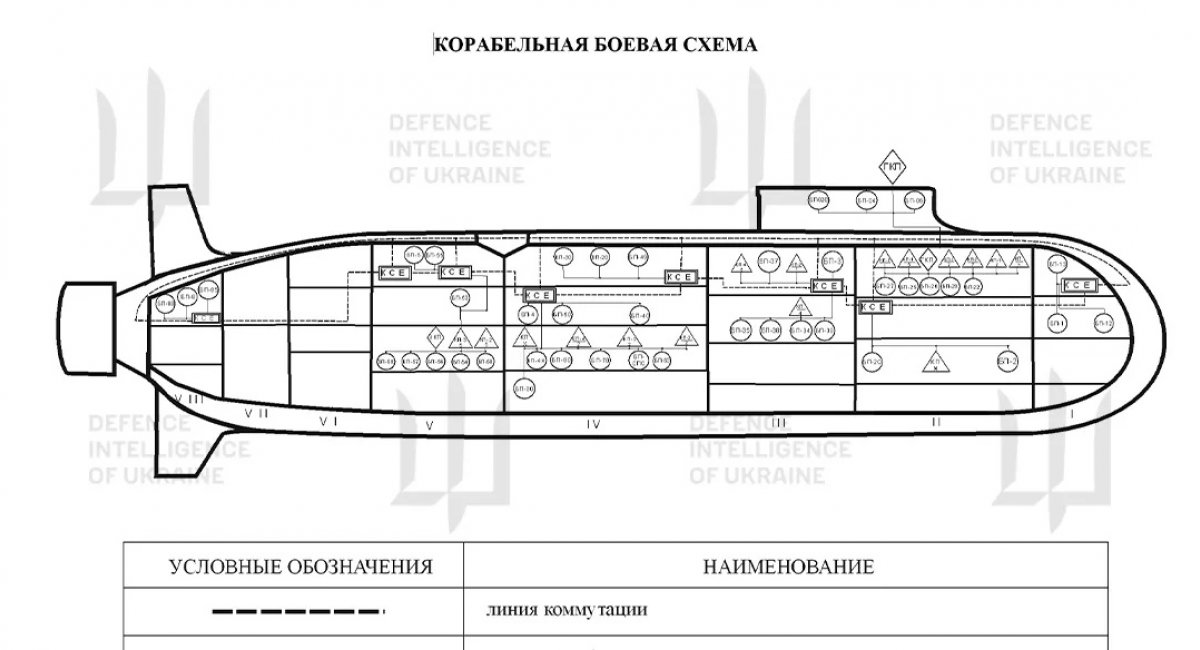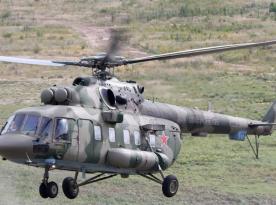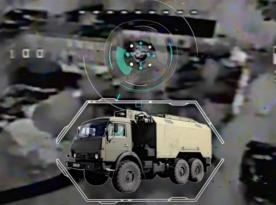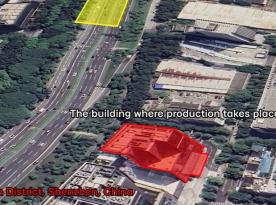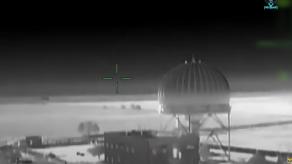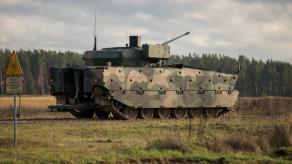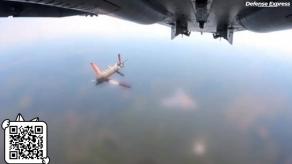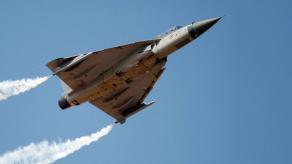Defense Intelligence of Ukraine (DIU) has announced that it obtained confidential documentation on the K-555 Dmitry Pozharsky nuclear submarine, a Project 995A Borey-class vessel recently commissioned into the russian Navy during a ceremony personally attended by Kremlin dictator Vladimir Putin.
The acquired documents reveal critical details that highlight the shortcomings of these russian nuclear submarines, debunking long-standing Kremlin imperialist myths about their capabilities.
Read more: New Nuclear Submarine K-555 Dmitry Pozharsky is Commissioned With Putin's Attendance, and It's Indicative
As Defense Express would like to emphasize, at first glance, the fragments of the documentation released by DIU hardly reveal any unremarkable features. However, the intelligence service mentioned the presence of a deformed radio beacon on the K-555 Dmitry Pozharsky.
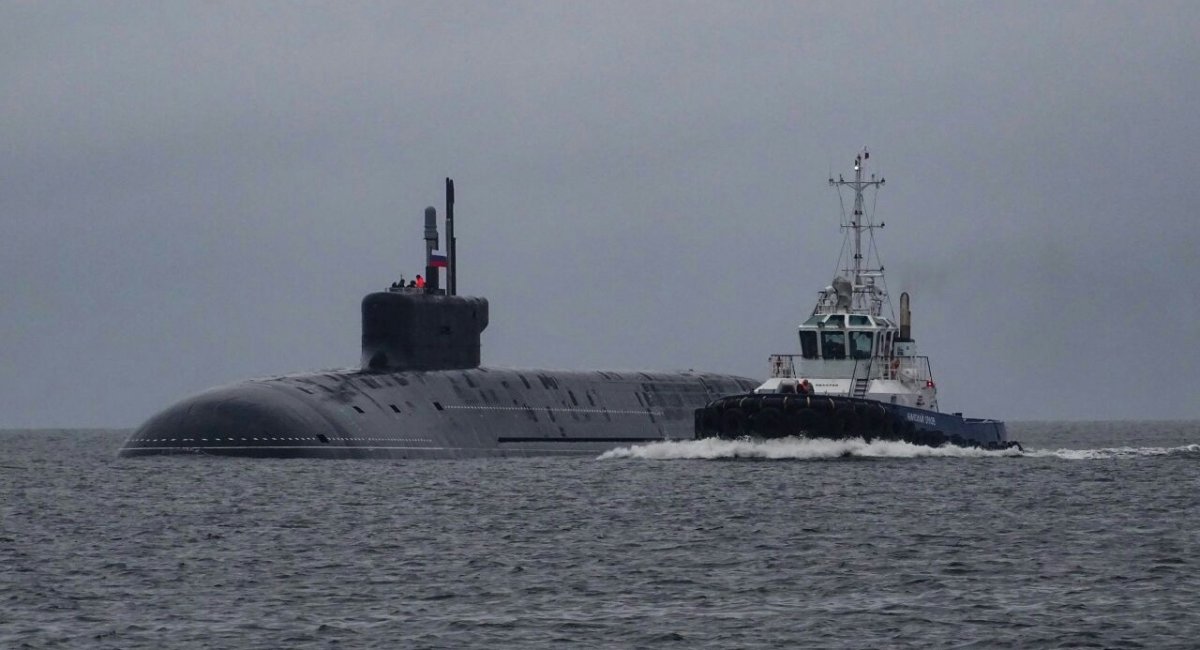
This detail in itself is quite revealing. The device is vital for emergencies: in the event of an accident while submerged, the crew must raise it to the surface in order to transmit a distress signal to shore. For example, if it suffered something similar to the incident with the ill-fated K-141 Kursk.
Western observers have already pointed out that this submarine was commissioned only a year after starting sea trials —an extraordinarily short period for a vessel of this class. DIU's report effectively answers how the russians achieved this rushed timeline: at the cost of "technical limitations and operational vulnerabilities" listed in the full classified study.
Project 995A Borey-A submarines, along with their predecessors in the Project 995 Borey class, form the backbone of russia's sea-based component of the nuclear triad. Thus, even limited details about them hold immense strategic value.
The scarcity of reliable open-source data on these submarines is evident when examining infographics produced by naval warfare analyst H I Sutton, whose renderings of the Borey class outline only general design features.
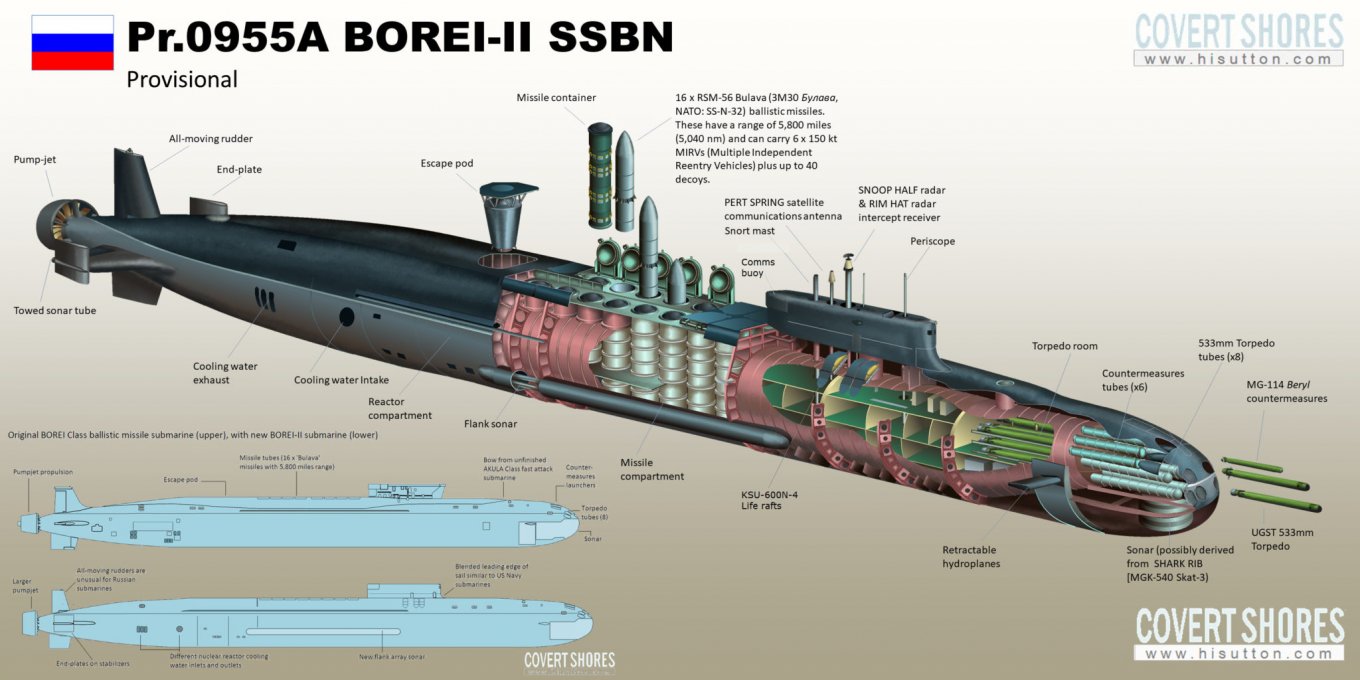
In this case, the expert's graphics not just simplify the picture — they reflect a major knowledge gap, especially on the internal layout of these ships.
In stark contrast, Sutton's diagrams of decommissioned Project 941 Akula ("Typhoon"-class) submarines — popularized in the West by The Hunt for Red October feature movie.
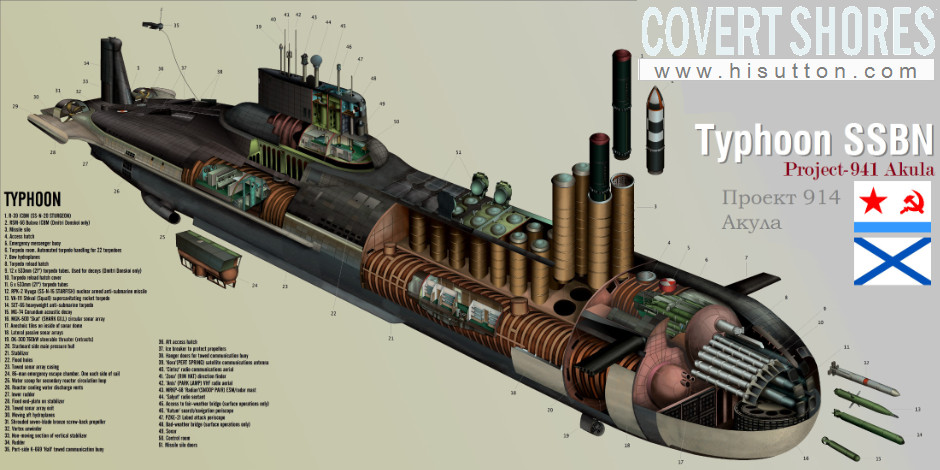
Alternatively, for even greater clarity, let's compare it to the graphic of Project 636.6 Varshavyanka diesel-electric submarines (some of which are actively launching missile strikes on Ukraine) which are far more detailed, even depicting internal layouts.

For context, Project 995A Borey-A nuclear submarines measure 170 meters in length, displace 24,000 tons submerged, and have a crew of 107. They are armed with 16 silos for D-30 Bulava ICBMs and six 533-mm torpedo tubes. A distinctive feature of this class is its pump-jet propulsion system, powered by a 200 MW nuclear reactor.
Read more: 31 Years Ago, U.S. Decided That 18 Nuclear Submarines Were Too Many — Here's What Happened Next



